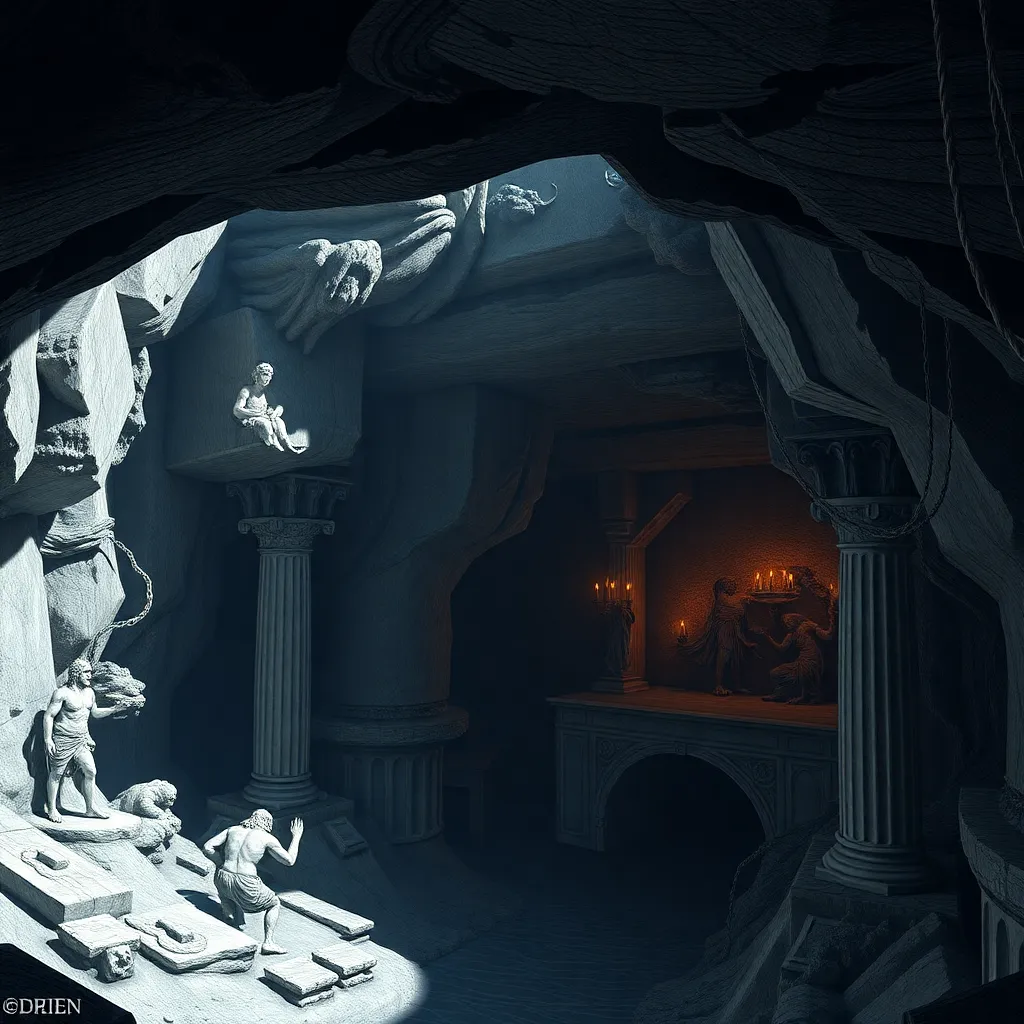The Underworld as a Metaphor: Understanding Its Symbolism in Greek Myths
I. Introduction
The Underworld, known as Hades in Greek mythology, is a complex realm that serves as the destination for souls after death. This mysterious land is not merely a place of torment or punishment; it is rich with symbolism and metaphors that reflect the human experience. The Underworld holds significant importance in ancient Greek culture, influencing their beliefs about life, death, and the afterlife. This article will explore the various symbolic meanings of the Underworld, shedding light on its role in understanding human nature and existence.
II. Historical Context of the Underworld
The concept of the Underworld has deep historical roots in ancient Greece, evolving through various beliefs and stories.
- A. Origins of the concept of the Underworld in ancient Greece: The Underworld’s origins can be traced back to early Greek religious practices, where the dead were believed to journey to a shadowy realm.
- B. Key figures: Central to the narrative of the Underworld are figures such as:
- Hades: The god who rules the Underworld.
- Persephone: The goddess of spring and queen of the Underworld.
- Charon: The ferryman who transports souls across the river Styx.
- C. Evolution of the Underworld’s depiction in myths: Initially portrayed as a dreary place, the Underworld’s depiction evolved to include various realms such as Elysium, a paradise for the virtuous.
III. The Underworld as a Reflection of Human Experience
The Underworld embodies profound themes that resonate with the human condition, particularly in relation to death and the afterlife.
- A. Death and the afterlife: Ancient Greeks held various beliefs about the afterlife, including rituals for honoring the dead and ensuring a safe passage to the Underworld.
- B. Emotional states: The myths surrounding the Underworld often explore emotional responses to mortality, including:
- Fear of the unknown.
- Hope for a reunion with loved ones.
- Acceptance of the inevitability of death.
- C. The journey of the soul: Myths frequently depict the soul’s journey filled with trials, emphasizing the challenges and choices faced after death.
IV. Symbolism of the Underworld in Greek Myths
The Underworld serves as a powerful symbol in Greek mythology, representing transformation and moral judgment.
- A. The Underworld as a realm of transformation: The journey to the Underworld often signifies a transformative experience for souls, leading to rebirth or enlightenment.
- B. The significance of rivers: Rivers like Styx and Lethe play crucial roles in the Underworld, symbolizing:
- Styx: The river of oaths, representing the boundary between the living and the dead.
- Lethe: The river of forgetfulness, symbolizing the loss of memories and the burden of past lives.
- C. The role of judgment and morality: The fate of souls in the Underworld reflects the moral choices made during life, with figures such as Minos serving as judges.
V. The Underworld and the Concept of Duality
Greek myths often explore the duality of existence, with the Underworld serving as a critical counterpart to life.
- A. Life vs. death: Myths illustrate the interconnectedness of life and death, emphasizing that one cannot exist without the other.
- B. Light vs. darkness: The Underworld represents darkness and uncertainty, contrasting with the light of the living world.
- C. Hope vs. despair: Narratives often balance themes of hope and despair, highlighting the struggles of souls and their potential for redemption.
VI. The Underworld in Modern Interpretations
The symbolism of the Underworld continues to resonate in modern literature, art, and psychology.
- A. Influence on contemporary literature and art: Many modern works draw on the imagery and themes of the Underworld, reflecting its timeless relevance.
- B. Psychological interpretations: The Underworld is often viewed as a representation of the unconscious mind, where repressed emotions and fears reside.
- C. Cultural adaptations: The metaphor of the Underworld evolves in various cultures, adapting to contemporary beliefs and societal norms.
VII. Case Studies: Key Myths Illustrating the Underworld’s Symbolism
Several myths illustrate the rich symbolism of the Underworld, showcasing its multifaceted nature.
- A. The myth of Orpheus and Eurydice: This tale exemplifies love and loss, as Orpheus ventures into the Underworld to retrieve his beloved, symbolizing the power of love and the pain of separation.
- B. The story of Demeter and Persephone: This myth represents the cycle of life and death, with Persephone’s descent into the Underworld signifying the changing seasons and the relationship between mother and daughter.
- C. The Twelve Labors of Heracles: Heracles’ encounters with the Underworld highlight themes of heroism and the struggle against fate, illustrating the trials that shape one’s character.
VIII. Conclusion
In conclusion, the Underworld in Greek mythology serves as a profound metaphor for understanding human nature. Its symbolism reflects the complexities of life, death, and the journey of the soul. The enduring legacy of these myths continues to offer insights into our fears, hopes, and moral dilemmas. As we explore the relevance of the Underworld in contemporary society, we recognize its power to illuminate the depths of human experience and the eternal questions that accompany our existence.




